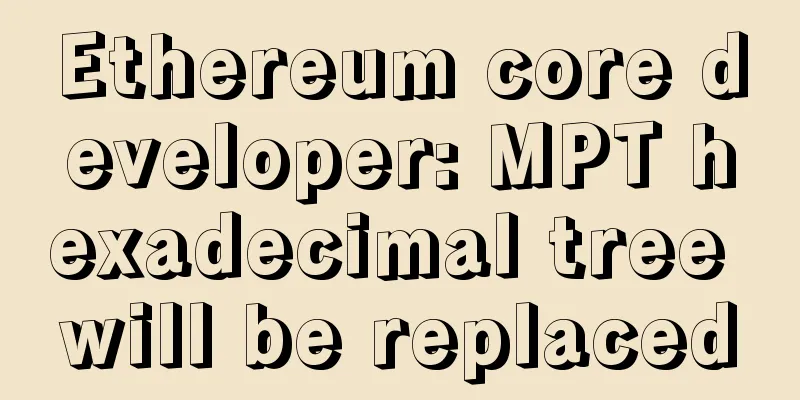In-depth analysis of stETH depegging: a false alarm or another crypto crisis?

What is Lido?Cobie published a blog post introducing Lido in October 2020: In short, Lido is an autonomous staking pool that tokenizes the Ethereum staked by users. When a user chooses to stake an Ethereum, Lido will select a verification node and return a stETH in return. When this ETH obtains staking income, the user's stETH balance will automatically change to match the balance on the beacon chain. When Ethereum staff finally announces the next step, stETH will be automatically unstaked and the target will be allowed to be redeemed. The shortcomings of Ethereum's own staking mechanism and the beacon chain that was launched at the end of 2020 but has no specific merger time are the reasons why Lido is very popular. For users, Lido is undoubtedly the most popular way to stake Ethereum. The “anchoring” of stETH?For most of its life cycle, stETH and ETH were basically exchanged at a 1:1 ratio. While there was a lot of volatility in the first few months — the price of each stETH ranged from 0.92 to 1.02 ETH — the exchange rate of stETH to ETH has become increasingly stable as liquidity has increased and time has passed. However, the subsequent story is the unpegging of UST and the collapse of LUNA, and stETH has also been affected to a certain extent. Since then, the price of Ethereum has been falling for almost 10 consecutive weeks, with a drop of about 50%. Perhaps because the relatively stable 1:1 exchange rate between stETH and ETH is unprecedented (it may also be that "anchoring" has become a hot topic that has caused people to ptsd after the collapse of UST), many people mistakenly believe that stETH is also pegged to ETH. In fact, stETH is not strictly anchored to ETH, and a 1:1 exchange rate is not a necessary requirement for Lido. stETH will actually be priced in the market based on the demand or liquidity of pledged ETH, rather than simply anchored. Lido is not the only liquid staking protocol. Judging from other staking protocols with low utilization and poor liquidity, a liquid market with a 1:1 staking ratio is impossible: BETH on Binance: AETHC by Ankr: Both of these staking derivatives work similarly to Lido. Ankr was launched before Lido, while Binance’s BETH came a few months later, so it can be said that they have existed for roughly the same amount of time. As shown in the above figure, AETHC and BETH have basically never traded at the "anchor" price since their inception - BETH fell to a minimum of 0.85 ETH per BETH, and AETHC fell to 0.80 ETH. Collateralized derivatives are not stablecoins, not even to the extent of being so-called “algorithmically stable.” Some people think they are more akin to Gretscale’s GBTC, or to futures markets with unknown future delivery dates. Fundamentally, they lock up tokenized rights to collateral, and it is expected that they will trade at a discount to the price of the underlying asset they are locking up. Reasonable pricing for redemption, arbitrage and staking ETHUsers can quickly mint a stETH on Lido by staking one ETH. For this reason, stETH should never trade above 1 ETH. If stETH was ever trading at 1.10 ETH, traders could simply mint 1 stETH with 1 ETH and then sell it for 1.10 ETH — they would do this repeatedly until parity was restored. This "convenient" arbitrage opportunity is not currently realistic in the other direction. ETH liquid staking tokens such as stETH, BETH, RETH, AETHC, etc. cannot be redeemed on eth2 that supports transactions after the merger. However, the exact time of the merger has not yet been determined, it may be in October this year, and the possibility of being pushed to the end of this year or the beginning of next year cannot be ruled out. The time of state conversion and branch update after the merger is also uncertain, and it will largely take 6 months after the merger. Of course, the amount of ETH that can be unstaked at one time is also a limiting factor. If ETH staked in various ways were unstaked at the same time, the queue for unstacking might take more than a year. After everything settles, there will be two-way arbitrage opportunities for liquid staked currencies - traders can buy 1 stETH with 0.9 ETH, redeem it with 1 ETH, and repeat this process. However, even in a bull market, and with the possibility of two-way arbitrage, the price of liquid pledged tokens may still be lower than the price of the underlying assets. A reasonable pricing standard is actually a dynamic balance point that can effectively weigh the buyer's risk of redemption/unstaking period and the potential benefits that this risk can bring, and the seller's weighing of the impact of the unstaking period on himself to determine whether to sell immediately, to find the maximum benefit for the entire system. For now, the lack of a redemption path results in a significant reduction in liquidity. In a bull market, ETH is in high demand, and traders can buy stETH at a price lower than 1ETH, which is also a way to earn extra ETH, so it is very attractive to buy stETH at a small discount. In addition, the demand for liquidity is low in a bull market, and investors are willing to hold assets that can bring income, so stETH will not face greater selling pressure. However, in a bear market, the demand for ETH is extremely small, and people's demand for liquidity increases rapidly. The demand for long-term holding of this "reflexive" asset has been greatly reduced, and more and more users will choose to sell their staked ETH positions and prefer to hold ETH in the short term. The discount ratio between stETH and ETH actually represents the relationship between stETH holders' demand for liquidity and their demand for purchasing staked ETH derivatives at a discount. At the same time, some big players have expressed their near-term need for liquidity by exiting the stETH market. Of course, the determination of the discount rate is also affected by smart contract risks, governance risks, beacon chain risks, and whether a merger occurs. Although these risks seem like constants compared to variables such as buyer and seller demand willingness, people's assessment of their importance will also change with concerns about market changes. It looks like macro liquidity preference is still the biggest influencing factor, while views on mergers seem to be a less influential factor so far. Who is selling?While many people are focusing on the price of stETH due to the UST ptsd, stETH has the potential to be a different story. The most noteworthy question in the discussion about stETH now is: Who are the “fixed” sellers? The answers seem to point to a few groups:
Leveraged PledgersInvestors use Aave to leverage ETH. The transaction process is as follows:
Instadapp and other similar products turned this transaction into a "treasury", attracting sizable deposits to buy leveraged stETH positions. Unless traders can provide more collateral for these positions, they will have an on-chain liquidation price. At the same time, if you want to deleverage, you need to sell stETH in exchange for ETH, which also helps the pricing of stETH. If on-chain liquidation is triggered, this selling pressure will naturally cause the price of stETH to fall. CeFi deposit and withdrawal behaviorThe second group is less transparent. There are rumors and on-chain research that entities like Celsius have so-called liquidity issues. Of course, since Celsius is a "CeFi" company, its financial situation or fund management strategy is not fully disclosed to the public. Therefore, this is all pure speculation and it is impossible for an outsider to truly know what is going on inside Celsius. But researchers speculate that the current rate at which users can withdraw funds will soon exceed the liquidity Celsius has. There is also speculation about Celsius’ previous DeFi investment losses. Celsius allegedly lost funds in StakeHound, Badger, and Luna/UST. Celsius allegedly used customer deposits for DeFi reinvestment to provide additional returns, during which they may have suffered losses due to omissions. In addition, they also cooperated with Lido and other illiquid staking node operators to pledge a large amount of ETH, which is illiquid and may take half a year or even a year to redeem. For Celsius, since their position size is larger than the available liquidity of stETH, even the so-called liquid pledge is not actually liquid. If Celsius becomes a forced seller of stETH in order to restore liquidity for user withdrawals, this may be the trigger for multiple liquidations. In fact, the fear of this event may also be a trigger. Of course, this is all speculation. Celsius's actual financial situation, instruments, and customer liabilities are not actually known to outsiders. While it’s unlikely that Celsius would completely lose its customers’ funds, it is theoretically possible that Celsius could end up in such a situation if there is no redemption date for assets on the beacon chain when users request withdrawals. Celsius’s handling of this situation seems particularly important. Using these locked assets to borrow money to repay customers only delays their time as “forced sellers” and makes the final outcome of the incident worse. So, who is the "big villain"?It is not realistic to know the future price trend of stETH, BETH, AETHC, and RETH now. On the contrary, imagine that if the Celsius scam is true, or if the leveraged pledgers on the chain are no longer able to provide collateral, etc., then who will be the biggest loser? Without a doubt, of course, it is Celsius and its users. Celsius may not be able to process withdrawals for every user, and may also suffer considerable losses due to selling at a low price to fill the withdrawal gap before the merger. PS: From Celsius’ perspective, perhaps it would be a good choice to exit stETH in private OTC at an appropriate discount to save face and maintain credibility. Those who increase leverage cannot escape the bad luck either. Similarly, anyone who wants to exit a stETH position before the state transition on the beacon chain will also find it difficult. Imagine that a trader or investor who stakes ETH today (or buys stETH at a "discount" today) will need to exit after 3 weeks or 3 months, and the stETH/ETH ratio is obviously not exactly the same as when entering the market. After the merger, since each stETH can be exchanged for an equal amount of ETH on the beacon chain, non-leveraged stETH holders can exit directly by unblocking the mortgage on the beacon chain without suffering any losses. Is 1:1 redemption guaranteed?stETH, BETH, and AETHC can all be redeemed for ETH in equal proportion when the Ethereum merger is completed and redemption is possible. However, there are two possible situations that can break the 1:1 redemption:
Although Slash rarely occurs on the beacon chain and most liquidity staking protocols have complete verification nodes, the occurrence of the above two low-probability events cannot be ruled out. Of course, the audit process of the protocol must be very comprehensive - but what is certain is that the vast majority of people in the world may have audit ptsd. While these risks may be real, either minor or major, their probability of occurrence is extremely small and the risk exposure does not change over time. There are also some delivery risks such as eth2 (whether the merger occurs and what happens when the merger occurs, etc.) and governance risks, which also have not increased or decreased substantially. PS: If eth2 is not implemented, people may be able to speculate where the staked ETH will go. Since liquid staking derivatives only account for 1/3 of all staked ETH, every cryptocurrency company and exchange has staked ETH in some way, so perhaps some kind of social consensus is needed to eventually redeem it, which can be said to be a more complicated issue than just discussing staked tokens. In short, without considering the above risks and provided there is enough ETH to pay, regardless of the stETH/ETH ratio in the market, any "*ETH" minted in the liquid staking pool will eventually be redeemed at a price of 1ETH. Market preferences are quietly changingFor those willing to accept the risks of smart contracts and validating nodes, these situations will provide an interesting opportunity. So, how long will traders be willing to hold stETH, and at what price will they be willing to enter the market? Mergers and state transitions on the beacon chain may be imminent, and arbitrage will become more attractive. As the expiration date approaches, the perceived price risk is likely to decrease, although much will still depend on trader sentiment towards the price of the US dollar. |
<<: BTC is down more than 62% from its all-time high, and most NFT investors have not made a profit
>>: 2022 State of Cryptocurrency Report
Recommend
What kind of palm lines are best for girls?
I believe everyone knows that palmistry is closel...
Bloomberg: Bitcoin ETF is unlikely to pass, and the price will fall below $800
Bits ("bits" or "bits", which...
Square face girl's face
Different people have different looks and differe...
Roger Ver answers 10 questions about Bitcoin investing and more
Roger Ver is an early adopter and volunteer of Bi...
A woman's fate line exceeds her love line - Palmistry analysis
There are countless line segments in our palms, a...
Where is the beauty mole? What is your fate?
People with beauty moles often give people a gent...
How to predict fortune through beard and face
In physiognomy, beard is not only related to our ...
The US $6 trillion economic stimulus plan has an immediate effect, and Bitcoin may become the biggest winner
Over the past few weeks, the entire world, includ...
Understand the PolyNetwork 600 million coin theft case in one article. The largest amount in DeFi history. The full review of the whole process had early signs.
Wu said the author | Colin Wu, Ping Xiong Editor ...
The formation and classification of facial features
The formation and classification of facial featur...
Coin Zone Trends: Bitcoin Price Trends Based on Big Data This Week (2017-06-20)
The price of the currency is in a tug-of-war betw...
Becoming a wealthy woman on your own
1. People with enlarged limbs will experience fin...
What is the fate of people with eight-character lines on their foreheads?
Some people say that the eight-character lines ar...
What should people with messy eyebrows pay attention to?
In life, everyone has his or her own partial weal...
How to tell marriage from women's palm
How can palmistry tell a person’s marriage? Marri...









